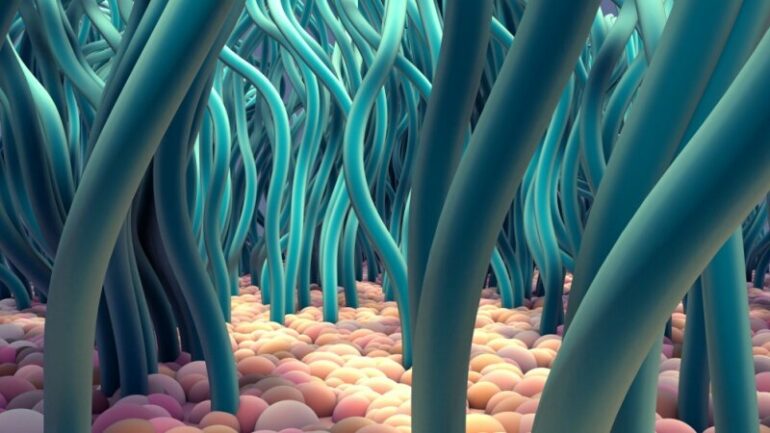Sperm can’t claim all the credit for their strong swimming. Carpets of tiny hairs lining the inside of the fallopian tubes give them an extra boost, propelling them upwards.
Now, UO theoretical physicist John Toner has an explanation for how these hairs, called cilia, move fluids and small particles in the body.
He’s created a mathematical model that explains how the cilia align to move particles in a consistent direction. The fluid flowing above the cilia help the hairs to wave in the same direction and push the particles along. He and his colleagues describe the equations in two new papers, published in December in Physical Review E and Physical Review Letters.
Toner has been studying the physics of flocking for years. He previously developed equations that explain how hundreds of birds synchronously swoop across the sky, or how schools of fish swim in unison. He won the 2020 Lars Onsager Prize from the American Physical Society for his work.
But considering the question of cilia requires a slightly different approach. “In biological systems, much of the important action is happening at a surface where a solid meets a fluid,” Toner said. “What I realized is, that’s a very different kind of flocking than what I’d been thinking about.”
Cilia drive not just sperm, but many other kinds of crucial movements inside the body, including removing mucus from the lungs. They’re interesting challenge from a physics perspective, because the hairs are fixed in place on one end, Toner said.
Aligning is easier when movement is involved. For instance, Toner envisions a large group of people standing in a foggy field. They can see the people near them, but not everyone in the crowd. If asked to all point the same way, they’ll fail to do so. But ask the group to all walk in the same direction, and they’ll succeed.
The liquid moving over the cilia has an important effect, it turns out. It supplies the motion that helps the cilia align in one direction, creating a feedback loop that in turns propels the fluid in a consistent direction. That is, the system stabilizes and self-corrects.
“Individual hairs make small mistakes, but the overall fluid drags it back,” Toner said—like getting pulled into the current of a river.
In the future, Toner wants to improve his model to more closely replicate what’s seen in biological systems.
“We treated the fluid above the cilia carpet as if it was infinitely deep,” he said. But fluid in the body usually moves through small channels. Limiting the depth of the fluid in the model will change the projected interactions between the cilia. How this changes the overall behavior of the whole system remains an open question, Toner said.
More information:
Niladri Sarkar et al, Hydrodynamic theory of flocking at a solid-liquid interface: Long-range order and giant number fluctuations, Physical Review E (2021). DOI: 10.1103/PhysRevE.104.064611
Niladri Sarkar et al, Swarming Bottom Feeders: Flocking at Solid-Liquid Interfaces, Physical Review Letters (2021). DOI: 10.1103/PhysRevLett.127.268004
Provided by
University of Oregon
Citation:
Physics of cilia explain sperm’s successful swimming (2022, January 18)


